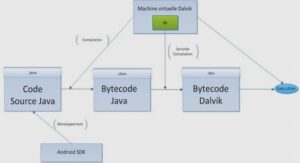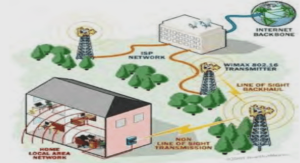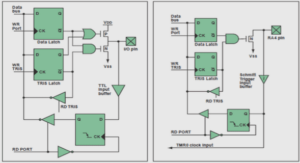Control Theory for Gain Scheduling
H∞ Control in LMI Regions
In this section some theoretical results concerning H∞ control with pole placement constraints in LMI regions will be presented. The section starts with a classical analysis motivating the use of this powerful synthesis method for the computation of LTI controllers at the first benchmark example of Chapter 5. The subsequent sections give all the necessary results for a systematic treatment of this control problem with most of the material drawn from .
Motivation
Consider a SISO linear time invariant system G(s) and a controller K(s) in a 2 nd order system analysis standard closed loop control configuration (see Fig. 3.1a). The primary goal of classical control systems is to design the controller K so that the time response y(t) to a step reference input yr(t) has good properties. Many of these properties are dominated mostly by the location of the poles λ of the closed loop system H(s) with: H(s) ∆= Y (s) Yr(s) = G(s)K(s) 1 + G(s)K(s) (3.1) To quantify the influence of the pole location to the time response of the closed loop system H(s), suppose that H is or may be approximated by a second order system (see Fig 3.1b), as is the case very often in practice, with: H(s) = ω 2 n s 2 + 2ξωns + ω2 n (3.2) The transfer function parameters ωn and ξ are called undamped natural frequency and damping ratio of the poles λ1,2 of H, being the roots of its denominator, with: λ Poles 1,2 = −ξωn ± jωn p 1 − ξ 2. (3.3) The quantitative meaning of the two fundamental variables ωn and ξ is related to the step response of H. The undamped natural frequency is the system’s output oscillation frequency if its damping ratio is reduced to zero whereas the damping ratio is closely related to the overshoot experienced on the system’s step response, given that the system is underdamped.The poles λ1,2 depend on both ωn and ξ (see Eq. 3.3), but it is the latter that scenarios characterizes the form of the step response y(t). Four scenarios are considered for the damping ratio: ξ = 0 (non-damped), 0 < ξ < 1 (underdamped), ξ = 1 (critically damped) and ξ > 1 (overdamped). The first and the third scenarios may be considered as limit cases of the second and the fourth ones. In the non-damped case (ξ = 0) the closed loop poles are purely imaginary with λ nd 1,2 = ±jωn and the time response is purely oscillatory whereas in the critically damped case (ξ = 1) the closed loop poles are purely real and negative with equal values λ cd 1,2 = −ωn. The system in the first case is said to be conditionally stable whereas in the second remains always stable. In the overdamped case (ξ > 1) the system demonstrates two distinct stable real poles with λ od 1,2 = (−ξ ± p ξ 2 − 1)ωn. For a constant undamped natural frequency, as the damping ratio increases the first stable pole goes to infinity whereas the second goes to zero. Thus, the time response of such as system becomes sluggish since it gets dominated by a slow stable eigenvalue. All three cases are not interesting for a control system for stability and/or speed reasons, so only the underdamped case is considered in the following analysis. For an underdamped system 0 < ξ < 1 its step response y(t) and step tracking error e(t) = yr(t) − y(t) (see Fig. 3.1b) are computed using basic knowledge of ODE theory as (see [105], pp. 147-148)1 : y(t) = 1 − e −ξωnt p 1 − ξ 2 sinà ωdt + arctan p 1 − ξ 2 ξ ! (3.4) e(t) = e −ξωnt µ cos ωdt + ξ p 1 − ξ 2 sin ωdt ¶ . (3.5) The step response y(t) of H(s) for a given ωn, presents different amounts of overshoot and oscillation around the desired reference trajectory yr(t) for different values of ξ (see Fig. 3.2a) whereas its settling speed for a given ξ is a function of ωn (see Fig. 3.2b). In order to characterize an LTI system in a more uniform way, several properties of its step time response y(t) may be defined, depending only on the damping ratio ξ and undamped natural frequency ωn.
LMI Regions
Motivation From the analysis of the previous section it has been made clear that the tranfor eigenvalue clustering sient behavior of a control system is dominated by the location of its closed loop poles. For a simple second order system as the one in Eq. 3.2, it is generally easy to obtain the desired closed loop dynamics by setting the damping ratio and undamped natural frequency to some desired values. For a higher order system there exist also solid methods for robust state/output feedback eigenvalue placement to an arbitrary accuracy (see for example [72] for details on the algorithm implemented in MATLAB°R for state feedback eigenvalue placement). Besides focusing on eigenvalue placement only, a control system could provide a control law that takes into account constraints over frequency domain aspects, robustness over external perturbations and parametric uncertainties. A good way to take into account all these requirements is the H∞ robust control context with additional eigenvalue placement constraints. There exists an extensive literature over this general problem of root clustering (e.g. see [28, 56, 57]); here however the approach found in [27] will be preferred since the author believes that it gives the more general results on the subject. Having given the motivation why eigenvalue placement is so important in Section 3.1.1, this section presents some introductory material over the famous LMI regions.
Design Objectives
As pointed out in the previous analysis, an eigenvalue placement procedure could be very efficient for a control system. This procedure could be either a rather exact or one-to-one eigenvalue assignment to predefined locations, or a more general placement of the system’s state space representation eigenvalues into convex sub-regions of the complex plane PC. The latter method is very appealing because it can be cast as an LMI convex optimization problem solvable by efficient algorithms. D(α, r, ϑ) These regions may be vertical or horizontal strips, circles, parabolas or genregion eral conic sections on the complex plane. An LMI region used often in practice is the D(α, r,ϑ) performance-stability region of Fig. 3.4. This particular LMI region could define a useful design objective as it is the intersection of an αstability vertical strip Dα that provides a minimum decay rate α, a semi-circular region Dr imposing undamped natural frequency constraints and a triangular constraint region Dϑ that sets minimum damping on the closed loop eigenvalues.
D-Stability
In order to use the powerful machinery of LMI solvers to confine the eigenvalues of a plant inside a given region D of the complex plane PC, a formal definition of such a region is needed and it is given by the following statement [27]: Definition 3.1. A subset D of the complex plane PC is called an LMI region LMI region if there exists a symmetric matrix Λ with Λ = ΛT ∈ Rm×m and a matrix M ∈ Rm×m so that: D =: {fD(z) < 0, z ∈ C} (3.15) with: fD(z) = Λ + zM + ¯zMT . (3.16) ¤ Given the negative definitiveness of Eq. 3.15 the LMI regions are always convex and symmetric with respect to the negative real axis of PC since fD(¯z) = ¯fD(z). In addition, more complex LMI regions may be constructed by simpler ones since they are in general invariant under set intersection. This result was used for example in the previous section in order to construct the D(α, r,ϑ) performance-stability region of Fig. 3.4 and will be further exploited when it comes to the placement of the eigenvalues of a LTI system inside this region.




